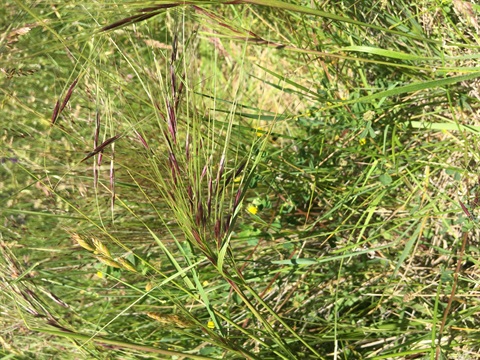Weed of the Week: Chilean Needle Grass
Published on 27 September 2022

As spring finally gets underway in the Snowy Monaro, we’re excited to welcome you back to our Weed of the Week series. Over the coming weeks and months, we’ll be sharing important information on the weeds threatening our region.
This week we’re focusing on Chilean Needle Grass, which is most distinctive during late winter with its winter green growth and frosted tips. As spring pasture growth returns it will blend in amongst other vegetation and become very difficult to identify again until seeds develop in late spring/summer.
Snowy Monaro Regional Council is calling on all community members to get to know our region’s weeds so we can understand how to play our part in protecting our environment, helping our farmers and supporting our community.
The impact of weeds on our community can be devastating and is estimated to cost the NSW economy about $1.8 billion annually (NSW Department of Industry, 2018).
What is Chilean Needle Grass?
As the name suggests, Chilean Needle Grass (Nassella neesiana) is native to South America. In Australia, it is recognised as a Weed of National Significance due its potential to invade and dominate natural ecosystems.
Chilean Needle Grass is a highly invasive, perennial grass and is common throughout much of southeastern NSW where it is known to dominate native and introduced pastures, roadsides and disturbed areas.
While it is not known to occur broadly throughout the Snowy Monaro region, it is prevalent around Michelago, Bombala and to the north of Jerangle where it has become well-established and difficult to control. Satellite incursions are regularly detected elsewhere throughout the region as a result of livestock, hay and machinery movements.
Why can Chilean Needle Grass be a problem?
- It is highly invasive, producing both conventional seed heads as well as stem seeds at nodes under the leaf sheath. Seeds remain viable in the ground for many years. The persistent seed bank makes Chilean Needle Grass extremely difficult to control.
- It exhibits similar characteristics to other grass species, and fescue in particular. It is quite palatable and is often preferentially grazed by livestock and native animals, making it very difficult to identify in a pasture situation until large patches appear.
- It can out-compete and dominate both native vegetation and improved pasture, potentially reducing carrying capacity and biodiversity.
- Adult plants are long-lived and very hardy.
- It is very difficult to identify in grazed paddocks, and can be confused with native and introduced grasses.
- It has the potential to injure animal’s eyes and cause carcase damage in a grazing situation.
- Seeds are readily dispersed in fodder and on animals, vehicles, and machinery.
What can you do?
- Don’t panic if you identify Chilean needle grass on your property. It is a common weed throughout southeastern NSW and can be managed.
- Identification is key – learn how to identify Chilean Needle Grass and understand best management practices.
- Contact Council if you suspect Chilean Needle Grass. Council’s Biosecurity team provide a free onsite weed identification and advisory service.
- Control incursions on your land swiftly, particularly in your high quality grasslands. The likelihood of eliminating this weed once established is very slim.
- Control options include crop rotation, pasture management, herbicide application and strategic grazing.
- Control plants before they set seed – this will reduce the likelihood of further infestations from establishing.
- Manage livestock grazing carefully during the summer months when plants may be seeding.
- Limit livestock and vehicle movements between infested paddocks and ‘clean’ paddocks.
- Avoid purchasing fodder from areas with known Chilean Needle Grass infestations – ensure purchases of fodder, produce, stock and soils are free of weed matter.
Download the free NSW WeedWise app for detailed information on how to identify and manage local priority weeds. Visit www.dpi.nsw.gov.au/biosecurity/weeds
Visit Council’s website to understand how we can help you with weed management. www.snowymonaro.nsw.gov.au/Environment-Waste-and-Weeds/Biosecurity-and-Weeds
Visit the Department of Primary Industries (DPI) website for information on weed control methods – www.dpi.nsw.gov.au/biosecurity/weeds/weed-control
Contact Snowy Monaro Regional Council if you have any questions regarding weeds on your property or in your neighbourhood. Call 1300 345 345 to be connected to our Biosecurity Officers who specialise in weed management.